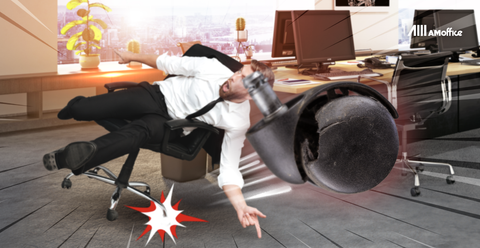Selecting appropriate office furniture for your team goes beyond aesthetics and budget—it directly influences productivity, comfort, and employee satisfaction. Thoughtful furniture choices cater specifically to various roles, work styles, and individual needs, significantly boosting employee well-being and overall business performance. This guide will help you make informed decisions tailored precisely to your team's requirements.
Understanding Team Roles and Furniture Needs
Different roles within your organization have unique furniture needs:
Executives and Management
Senior team members require furniture that symbolizes their role while accommodating demanding schedules. Executive desks and ergonomic chairs are crucial, ensuring comfort during extended working hours and frequent meetings. Consider spacious desks equipped with ample storage and integrated connectivity solutions. Successful executive suites often feature desks with charging docks and chairs that offer comprehensive lumbar support.
Creative Teams
Designers, writers, and marketing professionals thrive in environments that encourage creativity and collaboration. Modular desks, flexible seating arrangements, and communal workstations help facilitate dynamic teamwork. Furniture that fosters spontaneous interactions, such as round tables and movable chairs, boosts creativity. Leading companies like Google and Apple exemplify such innovative workspace designs. To explore more examples of successful companies’ offices, check out the article here.

Technical and IT Professionals
Tech-oriented roles typically involve extensive screen time and tasks demanding deep focus. Ergonomic chairs with lumbar support, height-adjustable (sit-stand) desks, and monitor arms help minimize fatigue and improve concentration. Ergonomic desks tailored for IT professionals have been proven by industry leaders like Microsoft to enhance productivity significantly.
Sales and Customer Support
Teams frequently interacting with clients via calls or online channels benefit greatly from comfortable seating, adjustable desks, and acoustic panels that reduce ambient noise. Incorporating cubicle partitions or privacy screens alongside ergonomic seating helps maintain professionalism and clear communication. Well-designed ergonomic setups have consistently demonstrated increased customer satisfaction by minimizing distractions.

Key Factors to Consider When Selecting Furniture
Ergonomics and Comfort
Ergonomic furniture is central to productive workspace design. Solutions such as adjustable chairs, height-modifiable desks, and supportive footrests reduce repetitive strain injuries and boost efficiency. Spacious desk setups also prevent clutter, reducing stress and enhancing focus.
Flexibility and Mobility
Modern workplaces prioritize flexibility. Choose furniture that can be easily rearranged to support dynamic team structures and evolving project requirements. Lightweight, mobile furnishings enable rapid layout adjustments for collaborative tasks or focused individual work.
Durability and Maintenance
Office furniture represents a significant investment, making durability essential. Opt for pieces crafted from robust materials like hardwood, steel, or high-quality composites capable of withstanding daily use. Selecting stain-resistant and easily cleaned surfaces ensures long-term usability and cost-effectiveness.
Aesthetics and Brand Alignment
Furniture should reflect your brand identity and organizational culture. Sleek, contemporary designs suit innovative and tech-oriented companies, while traditional, sophisticated styles may better complement legal or consultancy firms. Carefully chosen color schemes and design details reinforce your brand’s professional image.

Incorporating Technology and Connectivity
Today's office furniture must integrate seamlessly with technology. Desks with built-in charging stations, effective cable management solutions, and specialized equipment accommodations (such as monitor arms or docking stations) are essential. Tech-friendly furniture keeps your workspace future-proof, efficient, and organized.
Sustainability Considerations
Businesses increasingly value sustainability. Choosing eco-friendly furniture crafted from recycled materials or sustainably harvested wood reduces your environmental footprint and enhances your reputation among eco-conscious employees and clients. Opt for furniture certified by reputable sustainability standards.
Final Thoughts
Selecting the ideal office furniture requires careful consideration of roles, work styles, ergonomics, aesthetics, and sustainability. Investing in tailored, functional furnishings promotes productivity, employee satisfaction, and overall organizational success. Begin optimizing your workspace by conducting a team survey or consulting with a professional workspace designer. This proactive approach ensures your team thrives in an environment specifically built for their success.
For comprehensive workspace solutions and expert consultations, reach out to AM Office. Our transparent, insightful advice is tailored precisely to your needs. Contact us today to transform your workspace.




